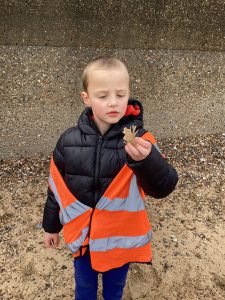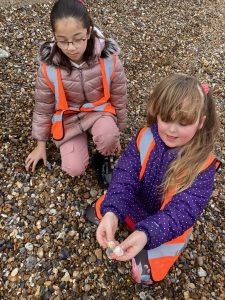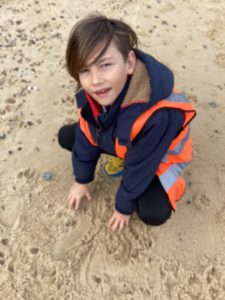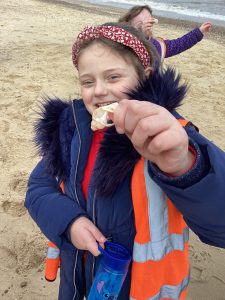Wilder Beach Schools
At Northfield St Nicholas we will use Wild Beach Schools as part of our rich and varied curriculum. This is part of a wider project from The Wildlife Trust, specifically supported by Suffolk Wildlife Trust https://www.suffolkwildlifetrust.org/coast
By becoming an active Beach School, it gives our pupils memorable activities that enable them to use their creative and investigation skills to develop their knowledge and understanding of the local area. This makes lots of sense as our school is one of the closest to the beach in the area and great for our children to have a strong connection with this fabulous natural resource for both learning and pleasure.
Beach Schools links into all areas of our curriculum, including creative writing, science, history, maths, art and PSHE. Our wild beach learning ensures children have a rich understanding of their local coastline and are invested in being its future custodians.
Our school will ensure that children have a rich knowledge of our local coastline and have a positive impact on maintaining the coastline through litter picks and feel personally invested in the local area.
Our beach schools programme intends to give our children an understanding of our local coastline. It is imperative that we instil in them the need to preserve the coastline. • Some activities such as litter picking will be continued on a yearly basis by all classes.
| Year Group | Suggested activities |
| Year 1 | scavenger hunt, cloud viewer, litter pick Skills • Recognise and discover objects that are naturally found on our local coastline • Understand and explain how we can have a positive impact on our coastline • Recognise and describe different cloud forms.
|
| Year 2 | story chair, beachcombing, litter pick Skills • Use resources from our local coastline to create a story chair • Identify both plants and animals found on our coastline • Understand and explain how we can have a positive impact on our coastline
|
| Year 3 | Make a plankton net, marine classification – fauna, litter pick Skills • Identify the fauna that inhabits our coastline • Recognise the different types of plankton that live in the sea • Make a plankton net using a plastic bottle, a pair of tights and string
|
| Year 4 | rubbish timeline, Marine classification – flora, semaphore signals Skills • Gain an understanding of how long it takes for rubbish to break down in the sea • Identify the flora that inhabits our coastline • Recognise and use semaphore signals
|
| Year 5 | get to know a plant, comparing the features of our coastline at various points, shingle survivors, tide timetables Skills • Recognise the flora that survives on our coastline despite harsh conditions • Have an understanding of our coastline and its changes over time • Have an understanding of tides and read a local tide timetable
|
| Year 6 | Marine classification, longshore drift, measuring wind speed using bubbles, litter pick, shelter building Skills • Understand the process of longshore drift • Classify the marine life found on our coastline • Use standard measurements to measure wind speed
|



